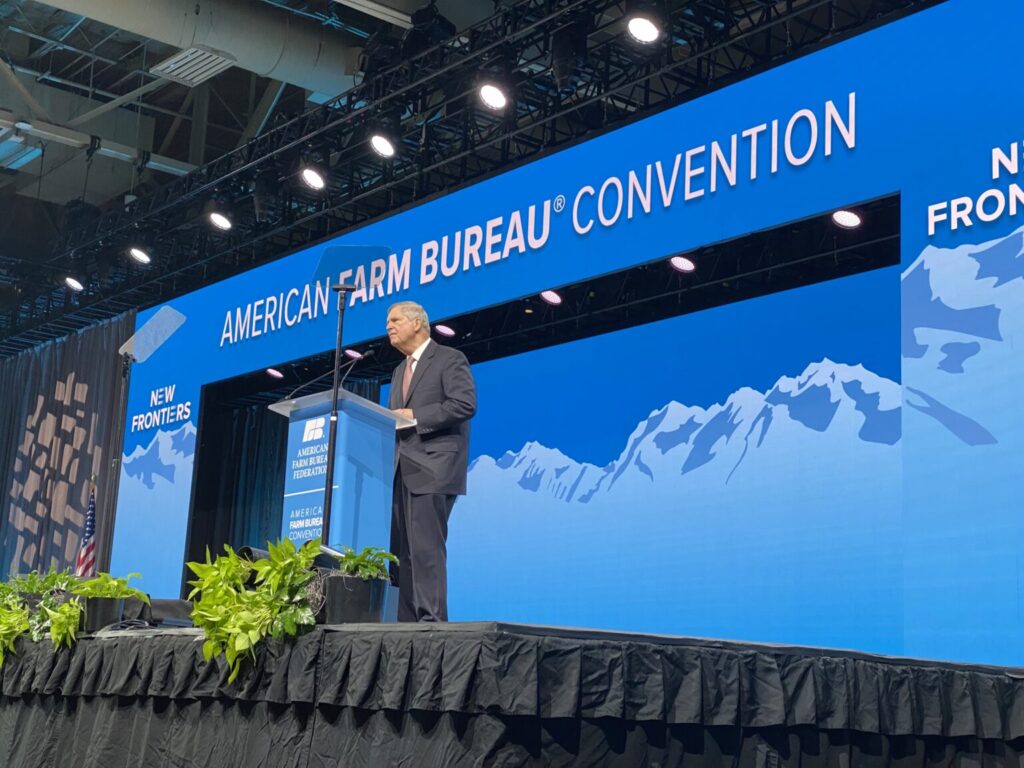
SALT LAKE CITY — U.S. Department of Agriculture Secretary Tom Vilsack was in Utah on Monday where he announced millions in funding for renewable energy and domestic fertilizer projects, with about $3.2 million headed to South Dakota.
Vilsack spoke during the American Farm Bureau Federation’s annual convention and trade show, which was in downtown Salt Lake City this year, where he touted the Inflation Reduction Act while sounding the alarm over the loss of small operations and wealth consolidation in the agricultural industry.
Since 1981, Vilsack said the country has lost 437,300 farms and over 141 million acres of farmland.
“Those are farm families that are no longer in the farming business, which means that in all likelihood their families are no longer in those small communities,” Vilsack said. “The question I ask all of you today is whether we’re OK with that?”
And despite what Vilsack called the best three years in net farm cash income ever in the U.S., small and midsize operations are not seeing the success of their large, industrialized counterparts.
About 7.5% of American farms received 89% of the income last year; which means the remaining farms, which Vilsack estimated at about 2 million, had to share 11% of income generated by agriculture.
“What we’re doing here is creating opportunities for that 92% of farmers to be able to have multiple revenue streams,” Vilsack said as he announced the new round of funding.
The federal dollars are coming through the Rural Energy for America and the Fertilizer Production Expansion programs, which direct about $207 million to projects in 42 states, according to the department. Roughly $94 million of that comes from the Inflation Reduction Act.
The funds announced Monday will support 682 projects, most of them aimed at reducing emissions and renewable energy.
The program provides grants and loans to farmers and rural small businesses to expand the use of wind, solar and other clean energy sources, which according to the USDA helps them “increase their income, grow their businesses, address climate change and lower energy costs.”
Vilsack called it “a voluntary, incentive-based market-driven system” that has become popular among farmers.
“I know that farmers and ranchers and producers are taking advantage of this because the programs are oversubscribed. The demand is great,” he said. “Farmers are now going to be paid, encouraged, incented, rewarded, for taking those steps to become more sustainable.”
